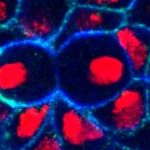Lien vers Pubmed [PMID] – 15293048
Dev. Genes Evol. 2004 Sep;214(9):442-52
A key challenge in evolutionary biology is to identify developmental events responsible for morphological changes. To determine the cellular basis that underlies changes in the larval peripheral nervous system (PNS) of flies, we first described the PNS pattern of the abdominal segments A1-A7 in late embryos of several fly species using antibody staining. In contrast to the many variations reported previously for the adult PNS pattern, we found that the larval PNS pattern has remained very stable during evolution. Indeed, our observation that most of the analysed Drosophilinae species exhibit exactly the same pattern as Drosophila melanogaster reveals that the pattern observed in D. melanogaster embryos has remained constant for at least 40 million years. Furthermore, we observed that the PNS pattern in more distantly related flies (Calliphoridae and Phoridae) is only slightly different from the one in D. melanogaster. A single difference relative to D. melanogaster was identified in the PNS pattern of the Drosophilinae fly D. busckii, the absence of a specific external sensory organ. Our analysis of sensory organ development in D. busckii suggests that this specific loss resulted from a transformation in cell lineage, from a multidendritic-neuron-external-sensory-organ lineage to a multidendritic-neuron-solo lineage.

